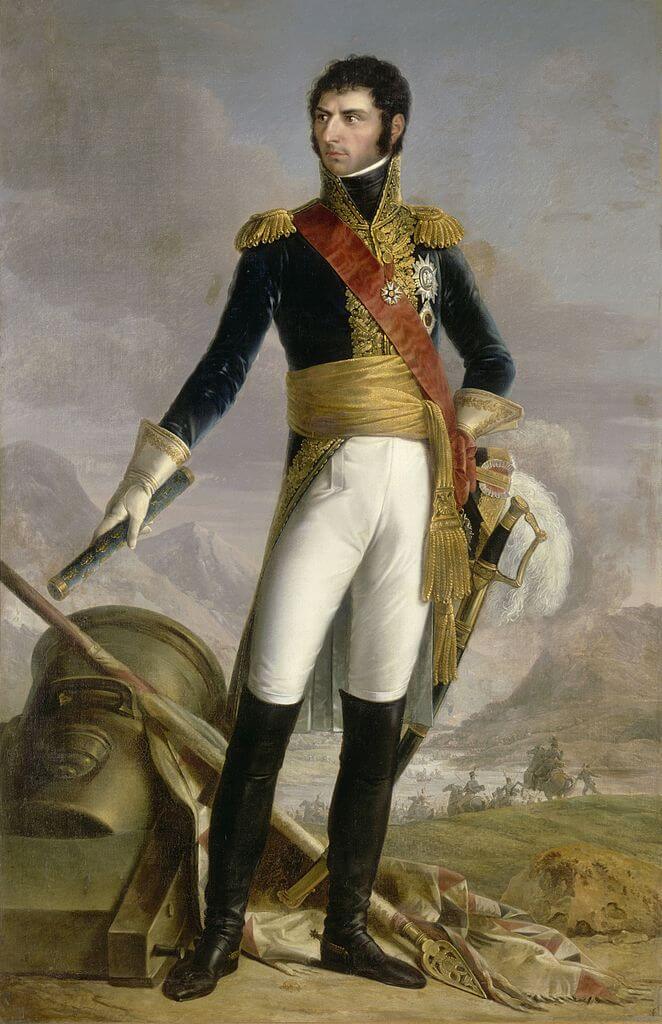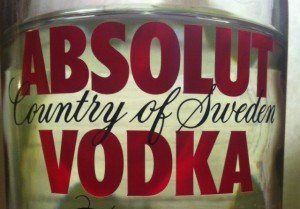A (Very) Compressed History of Sweden, part 4
Fine Arts, Factories, Vodka And Emigration
History tells us that in the last half of the 18th century, a pastry killed one king, another king was assassinated, a third was dethroned and started a playboy life roving around Europe, spreading his seed. The 19th century begun with a war that led to the loss of Finland, and continued with another war in which Norway was conquered. A new royal dynasty ascended to the Swedish throne, but royal power was coming to an end, and famine and drinking were tormenting the country.

In old times served as a dessert floating in a bowl of hot milk, today usually eaten with your coffee, i.e. “fika”.
The Enlightenment
In European history, the 18th century is known as the century of Enlightenment. Ideas from the French philosophers Voltaire and Montesquieu and the English writer John Locke slowly spread across the world. During the first half of the century, not much of this could be observed in Sweden: king Adolf Fredrik left only one impression in history: his death. Adolf Fredrik was not only a gourmet but also a gourmand, and died after having eaten a sumptuous dinner, which was ended with his favorite pastry, a semla. Or maybe more than one. Until recently, history books claimed that eating too many semlor caused his death, but as a relief for current-days semla-lovers, it has later been established that he died from a stroke.
A semla, or fastlagsbulle (Lent bun) is a very light and fluffy wheat bun, spiced with cardamom, filled with mandelmassa and whipped cream, traditionally eaten during Lent. (Mandelmassa is a paste of almonds, sugar, and eggwhite.) The name, semla, is derived from the Latin word “semolina”, which is the highest quality of wheat flour.
Adolf Fredrik was succeeded by his son, Gustav III. During his reign (1771-1792 AD), the ideas of Enlightenment reached Sweden and changed society. Gustav III is mainly remembered for his passion for arts, literature, theatre and music. He encouraged and subsidized poets such as Carl Michael Bellman, and scientists such as Carolus Linnaeus, the latter known for having created the modern scheme of binomial nomenclature and considered as one of the fathers of modern ecology. This was the time when the United States were created, and about this, Gustav III wrote:
“It is an interesting spectacle to see a state that creates itself, I – if I was not who I am – I would go to America to follow closely all phases of this new republic that comes into being. – This is perhaps America’s century. The New Republic, which hardly has a better composite population than Rome had to begin with, maybe one day will exploit Europe, just as Europe for two centuries has exploited America. Anyway, I can not help but admire their courage and lively like their boldness.”
Gustav III, and many people in the Swedish aristocracy, had dreams about restoring Sweden’s power and glory, and therefore he went to war against Russia. After several victories and a few losses, the war ended with a treaty that very much was status quo. Conspiracies against the king were made by people within the aristocracy, caused by a growing discontent with his autarchy, and Gustav III was assassinated, shot at a masquerade ball in the Opera house in Stockholm, in 1792 AD.
His son, Gustav IV Adolf reigned over Sweden from 1792 until 1809 AD. He felt a strong personal disgust for the French revolution, and having an unrealistic belief in the army’s strength, he declared war on France, which ended with a minor loss. He also engaged in a war with Russia, resulting in the loss of Finland 1809 AD. After that, he was forced to abdicate and went in exile.
Using the cover name Colonel Gustafsson, the ex-king roved around Europe as a playboy, never staying long in one place, fathering children with at least three of his numerous mistresses. Eventually broke and alcoholic, he settled in the tavern Weisses Rössli (The White Horse Inn) in Gallen, Switzerland, where he died 1837 AD from a stroke.

King of Sweden 1818-1844.
(Picture from Wikipedia
and nationalmuseum.se)
Introducing The Bernadotte Dynasty
In the year of 1810, the French Marshal, Prince of Pontecorvo Jean-Baptiste Bernadotte was offered, somewhat high-handed, by a Swedish diplomat to become Crown Prince of Sweden. The Marshal had previously declared himself to be “a devoted republican, ready to fight all royalists until my death”, but he changed his mind quite swiftly and accepted the offer. And – lo and behold – even if the diplomat had no right to give this offer, the Swedish Parliament approved and elected the French ex-republican to Crown Prince of Sweden, after he had converted to the Lutheran faith!
As Crown Prince and Commander in Chief, Jean-Baptiste had got a new loyalty: he declared war against his previous employer Napoleon, his native homeland France, and it’s ally, Denmark. (!) Sweden won the war, and Denmark hade to cede Norway to Sweden in 1814 AD. However, the Norwegians did not want to become Swedes: they declared independence and elected their own king. Sweden, and Jean-Baptiste immediately responded with a quick invasion, the Norwegian king was dethroned, and Sweden and Norway were united 1814 AD sharing the same king but each with its own parliament.
The Swedish invasion of Norway is the last war Sweden has fought.
Jean-Baptiste became king of Sweden in 1818 AD, with the name Jean changed to the more Swedish-sounding Johan, prefixed with the traditionally Swedish royal name Karl, thereafter known as Karl XIV Johan. He is the ancestor of the Bernadotte dynasty, still on the Swedish throne.
Even though the Union between Sweden and Norway was broken up later (see below), Karl XIV Johan is still commemorated in Norway’s capitol Oslo by the name of Oslo’s parade avenue, Karl Johans Gate (Karl Johan’s Street), which leads up to the Norwegian Royal Castle.
In Sweden, he is commemorated by the name of a fungus: Karljohanssvamp (Karl Johan’s mushroom), or just Karljohan. Now, this is actually one of the most delicious fungus there are, a bolete, in English known as “penny bun”. It is highly regarded in French and Italian cuisine; hundreds of tons of Karljohan are exported to France and Italy every year, to be served in the finest restaurants.
Power To The People! Or…?
Karl XIV Johan was followed by his son, Oscar I, and his grandsons Karl XV Johan and Oscar II. But the time was running out for monarchy; democratic movements and labour unions were gaining followers. The kings that followed Karl XIV Johan did not really manage to make any lasting impressions in history.
Oscar II was an avid hunter, but probably a poor marksman. To make up for this, an expert marksman was hired to stand behind the king, ready to fire a second shot a split second after the king, and follow up with a greeting: “Excellent shot, Your Majesty!”
Liberal, democratic and socialistic ideas began sweeping over the world. Europe’s absolute monarchies would gradually be replaced by democratic parliamentarism and constitutional monarchy, thus diminishing royal power to nothing, or next to nothing. Faint cries for power to the people were heard also in Sweden, but it would take a few more decades before something happened.
Industrialisation, Emigration And Drinking
The 19th century brought industrialisation to Sweden, at the same time as a shift occured in the agricultural economy. This meant that large numbers of farm workers lost their jobs and had to turn to the industrialized cities to make a living. But the numbers of workers were much higher than what was needed in the factories; this was of course a benefit to factory owners who thereby managed to keep wages low. The discontent led to two things: more than one million people sold their last belongings and emigrated to America, and strong labor unions were formed, together with left-wing political parties. The extreme left ideas never managed to find a real foothold though; the biggest party, Socialdemokratiska Arbetarpartiet (Social Democratic Labour Party), can be characterized as center-left.
The number of Swedish emigrants to America is estimated to have been 1,300,000. This meant that 20% of all Swedes were living in the US! Some took advantage of the Homestead Act and settled in the Midwest, others seeked life in the cities. According to official census 1910, approx. 100,000 Swedes lived in Chicago; this meant that Chicago was the second biggest Swedish city in the world, next to Stockholm! 🙂
Initially, Swedish immigrants were not well seen by people born in USA, but this changed during the last decades of the 19th century as the influx of immigrants from eastern and southern Europe increased. “They are not peddlers, organ-grinders or beggars; they are not selling clothes or running pawnshops … they don’t seek protection under the American flag… they are more like Americans than any other foreign people.” (M W Montgomery, 1885; seems like a pretty good rating by an American 🙂 )

During the 19th century the problem of drinking came into focus. The Scandinavian countries are part of “the vodka belt” which embraces the entire globe in the northern arctic and subarctic zones: Finland, Russia, Alaska, northern Canada and Labrador, Greenland, Iceland, Norway and Sweden. Drinking had been a neglected problem for centuries. Temperance movements and free church communities grew fast, and the right to brew and destillate brännvin (“burnt wine”, i.e. vodka) for personal use was taken away in 1860 AD. The alcohol monopoly was established in 1905 AD, meaning that beverages with more than 3.5% alcohol content may be sold only in Systembolaget (government controlled licor stores).
A few decades ago, many Swedes wanted to end the monopoly and the restrictions. With growing (and disappointing) experiences from journeys to other countries, Swedes seem to have changed their minds: today, a majority wants to keep the monoploy, appreciating the fact that all licor stores have the same, very wide selection, and the overall quality.
On January 11, 2013, Systembolaget had 9,791 different wines in stock (not counting sherry, portwine, maderia etc), 1,405 different whiskys, 191 different cognacs, and so on… (however, bottles of different sizes are counted as separate articles).
Your local Systembolaget store may not have all 9,791 wines at hand, but if you ask for a particular wine today, they will have it the day after tomorrow. But the most amazing thing is that every brand and vintage has been tested and approved before it gets out on the shelf… it is in fact impossible to buy a poor wine at Systembolaget (even if not all of them may appeal to your taste)!
However, foreigners often complain about not being able to buy wine in the grocery – except Norwegians, who cross our borders taking back as much as customs regulations allow… or maybe a few bottles extra.

The Divorce From Norway
Even though Norway had their own parliament and government, and in practise were independent in everything but foreign affairs, Norweigans had been discontent all the time since the Swedish-Norwegian Union was established. Proposals had been made several times in the Norweigan parliament to break up with Sweden and elect their own Norwegian king.
After negotiations between the governments in Karlstad – a town mid-way between Stockholm and Oslo – a divorce was agreed in 1905: Norway was independent for the first time in many hundred years and could elect their own king. This is – as far as anyone knows – the only occasion anywhere, anytime, when one country was divided in two without a single shot being fired.
The occasion is commemorated in Karlstad’s main square by a ghastly ugly statue, locally known as Torgskräcken (which can be taken as “the Horror On The Square”).